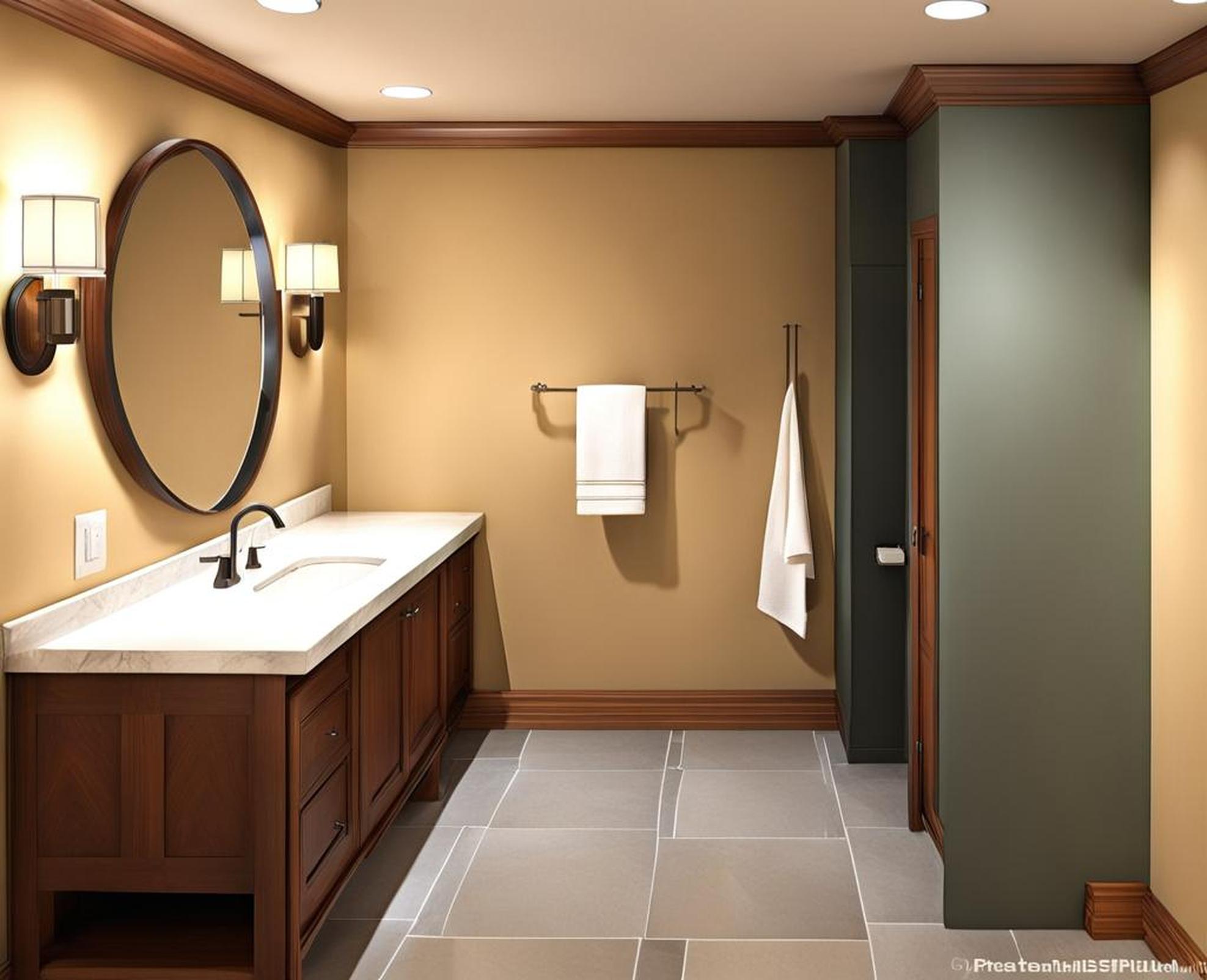Adding a bathroom to your basement is a complex project, but it can be done without connecting to traditional plumbing or sewer lines. With some planning and the right equipment, you can install fixtures like a toilet, sink, and shower to create a functional basement bath without the high costs or hassles of excavating your foundation to expand drainage.
Planning Your Basement Bathroom Layout and Features
The first step when taking on a basement bathroom addition is deciding on an ideal spot based on your existing basement layout, framing, and utilities. Consider an area with good ventilation and drainage to reduce moisture buildup. Allow adequate space for not only the fixtures you want, but also walkways and storage.
Designing Within Building Codes and Budget
When designing your bathroom layout, be sure to adhere to minimum ceiling height clearance, emergency egress, and other building codes. Plan locations for necessary plumbing like your toilet, sink, and shower stall or tub. Understand costs for equipment, construction materials, permits, and professional labor if required so your design aligns with your total budget.
| Basement plumbing renovations | $15,000 – $30,000 on average |
| Composting toilets | $1,000 – $5,000 per unit |
| Greywater systems | $2,000 – $7,000 depending on scale |
Applying for Required Permits
Once your layout is defined, research local regulations to understand requirements for legally adding living space or plumbing fixtures in your basement. Depending on where you live, you’ll likely need to apply for plumbing, electrical, mechanical, and building permits before starting construction.
Scheduling Inspections Throughout the Project
Your permitting process will detail mandatory inspections by code officials at different stages, like:

- Initial demolition
- Framing and rough-in of new plumbing components
- Insulation and ventilation confirmation
- Final safety checks after fixtures are set but before interior finishes
Passing these inspections ensures your basement bathroom is safe and minimizing risk of issues like mold growth.
Installing A Toilet Without Traditional Drain Lines
The biggest challenge with basement bathrooms is figuring out how to install a toilet without tying into existing waste drain pipes. Luckily, technology like macerating toilets allow for adding a toilet without expanding plumbing lines. Here’s a step-by-step overview:
Choosing From Composting or Macerating Toilet Options
Macerating toilets grind waste into smaller particles that can then be pumped to a centralized collection tank or existing sewer line. Composting toilets collect solids in a container to be emptied rather than using water. Both eliminate the need for traditional drainage pipes while converting waste safely. Compare models based on capacity, power type, discharge method and cost to pick the best fit.
| Standard macerating toilets | $1,000 – $1,500 |
| High-capacity macerating toilets | $2,500 – $5,000 |
| Waterless composting toilets | $900 – $3,000 |
Step-by-Step Instructions to Install Your Toilet
Follow these basic steps once you’ve selected your specialty toilet for maximum functionality and proper permit inspections:
- Turn off water supply and remove existing toilet if replacing
- Secure new mounting flange to flooring
- Attach toilet and discharge pump system
- Connect piping from pump to facility drain line
- Make water supply and electric connections
- Seal all joints and perform test flush
Adding Fixtures With Non-Plumbing Waste Disposal Systems
With your toilet situation handled, other basement bathroom additions like sinks or a shower can tie into a greywater system to filter and recycle water onsite instead of connecting to sewer lines. Here are two common approaches:
Installing a Greywater Reuse System
Greywater systems take gently used water from bathroom sinks, tubs, and showers then filter and store it for non-drinking reuse like flushing toilets. Installation involves setting an underground tank, pumps, filters, and valves then connecting fixtures to divert drainage.
For a completely waterless solution, composting sink and shower systems collect human waste in compost chambers without needing drainage. Some utilize natural breakdown processes while others use mechanical components to evaporate liquids and accelerate decomposition.
Most basement can accommodate a bathroom without sewer lines. Just get informed about local regulations and leverage the latest technology so health, safety and comfort aren’t compromised. Reach out to experts like licensed plumbers for guidance tackling trickier spaces.
